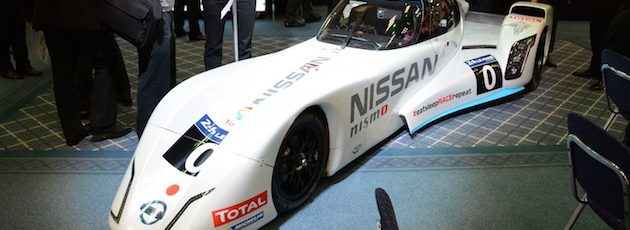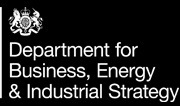
Event review: MIA Low Carbon Racing Conference
Motorsport can help the car industry reduce emissions, and the recently-launched Advanced Propulsion Centre can help make this happen. This was one of the main messages at the Motorsport Industry Association (MIA) International Low Carbon Racing Conference 2015 which took place at Autosport International on 7 January at the NEC, Birmingham
The event began with a keynote speech from Prof. Richard Parry-Jones CBE, co-chairman of the Automotive Council until very recently, who provided an excellent summary of everything you need to know about the future of the UK automotive industry.
Richard kicked off by saying that there is an opportunity for motorsport to help the automotive industry solve problems that it can’t solve on its own. This can be facilitated through the excellent partnership that has developed over recent years between the industry and government, and in particular via the Advanced Propulsion Centre (APC), which helps organisations bring new low emission propulsion products to market.
A recurring theme throughout the day was the realisation that it’s not just the carbon emissions of vehicles that need to be addressed, but also the tailpipe emissions that impact upon local air quality. Collaboration is the key to achieving significant emissions reductions, and this has been happening for a number of years through the Technology Strategy Board (now known as Innovate UK). The APC was launched last year with £1 billion of funding over ten years to accelerate such collaboration – with motorsport companies and OEMs being ideal project partners.
The UK has a large number of suppliers to the motorsport industry, and they have been serving the needs of motorsport, in areas such as efficiency, aerodynamics, lightweighting and composites – in other words all the things that the car industry also needs. A key difference is that car makers typically take a number of years to bring a new model to market, whereas motorsport companies can develop a vehicle from scratch in a matter of months. If motorsport companies can work with OEMs to introduce efficient technologies and the OEM can still ensure the end product is reliable, safe and affordable, then that would be a perfect outcome for the APC to facilitate through one of its projects. The APC can fund up to 50% of a project, so removing a large element of risk from the development of new low emission technologies.
Richard Parry-Jones made it clear that although UK automotive has made huge progress over recent years, there are significant challenges ahead – particularly to reach what is likely to be a 50g/km CO2 fleet average – as well as to achieve clean air in urban areas. He suggested that despite impressive recent emissions improvements, we’re only around a third of the way on the journey to reducing emissions to a level that would stand any chance of limiting the world to a two degree rise in temperatures.
The increased electrification of cars is already highlighted on the Passenger Car Technology Roadmap, and this is happening now with the launch of plug-in hybrids which achieve very low CO2 figures in the current NEDC tests. However new fuel economy and emissions test cycles are due to be introduced around 2018 with the aim of being more realistic, and it’s likely that emissions figures will worsen for a period when that happens.
Richard finished by saying that it won’t be many years before we have developments such as hydrogen fuel cell vehicles, and autonomous cars that could pick up the children from school. It would be ideal to align motorsport and the car industry more closely, and what better way to do this than have an autonomous race series – with hydrogen fuel cell-powered cars…
Tony Pixton, CEO of the Advanced Propulsion Centre, said that the APC would welcome emissions-lowering ideas and innovations from the motorsport industry that mainstream OEMs may not have thought of, and suppliers in the motorsport industry may be able to help OEMs reduce emissions more quickly. Interestingly, this was followed by a comment from Michael Mychajluk, Supply Chain & External Engagement Manager at Jaguar Land Rover, that JLR doesn’t know how to get down to the 50g/km CO2 target that was earlier mentioned by Richard Parry-Jones.
Tony confirmed that the APC would be pleased to talk to suppliers in the motorsport sector about how they could work with the APC to potentially bid for funding to carry out collaborative projects with car industry OEMs. The APC is ideally looking to fund projects between £5m and £50m which help to significantly lower emissions, however a Technology Developer Accelerator Programme (TDAP) pilot is currently running, with the aim of helping smaller companies progress their technologies to higher TRLs and MRLs.
There are already projects funded by the APC which have taken technologies developed for motorsport and applied them to on-road and off-highway vehicles such as buses and excavators. You can find out more about the APC by watching the video at www.apcuk.co.uk/about-apc
Apart from the APC, Formula E was the other main conversation piece of the day. Chris Aylett, Chief Executive Officer of the Motorsport Industry Association (MIA), frequently referred to himself as a dinosaur, and said that he had been quoted on many occasions in the past as saying that motorsport wouldn’t succeed without the noise of V8 engines. However Formula E, without any V8 noise, appeared to be doing very well.
The engagement of fans through social media, as well as bringing electric racing to city centres around the world at affordable entry prices, was seen as a huge factor in this success. Alejandro Agag, CEO of Formula E, joined the conference via a video link from Buenos Aires and said that Formula E had enjoyed 160 million interactions with its portal during its race in China, and that the average age of its fans was 29. This reinforces the belief that young people are more interested in green issues and the digital environment, and it contrasts with other forms of motorsport such as Formula 1 and IndyCar, where the average age of the fan base was estimated at being well over 49!
Alejandro announced that Formula E cars would retain the same chassis and batteries next year, but they would feature five different new powertrains along with associated new OEM involvement.
So, in summary, the car industry would welcome ideas from the motorsport industry to lower emissions and make cars more efficient. The APC has £1bn to invest over 10 years in collaborative projects that develop new propulsion systems that significantly lower emissions. Motorsport suppliers who are interested in accessing such funding should contact the APC via its website at www.apcuk.co.uk
Paul Clarke
Read the full review at http://www.greencarguide.co.uk/features/mia-international-low-carbon-racing-conference-2015-motorsport-can-help-car-industry-reduce-emissions/





